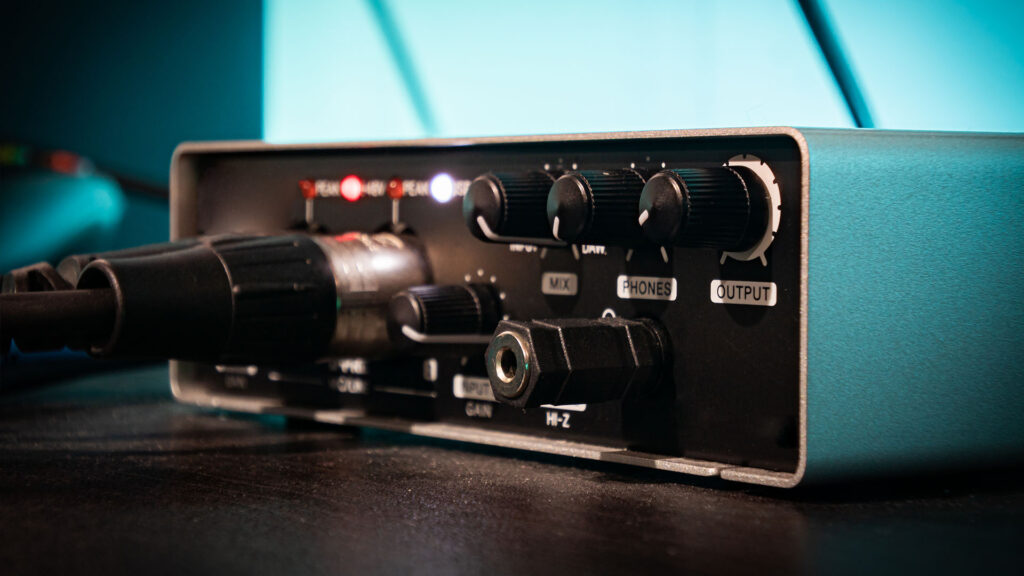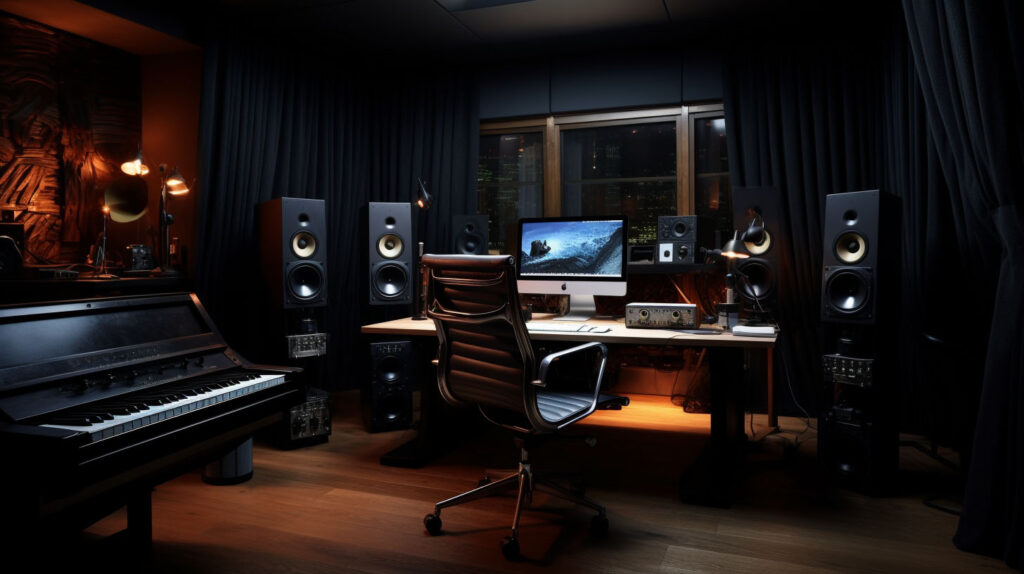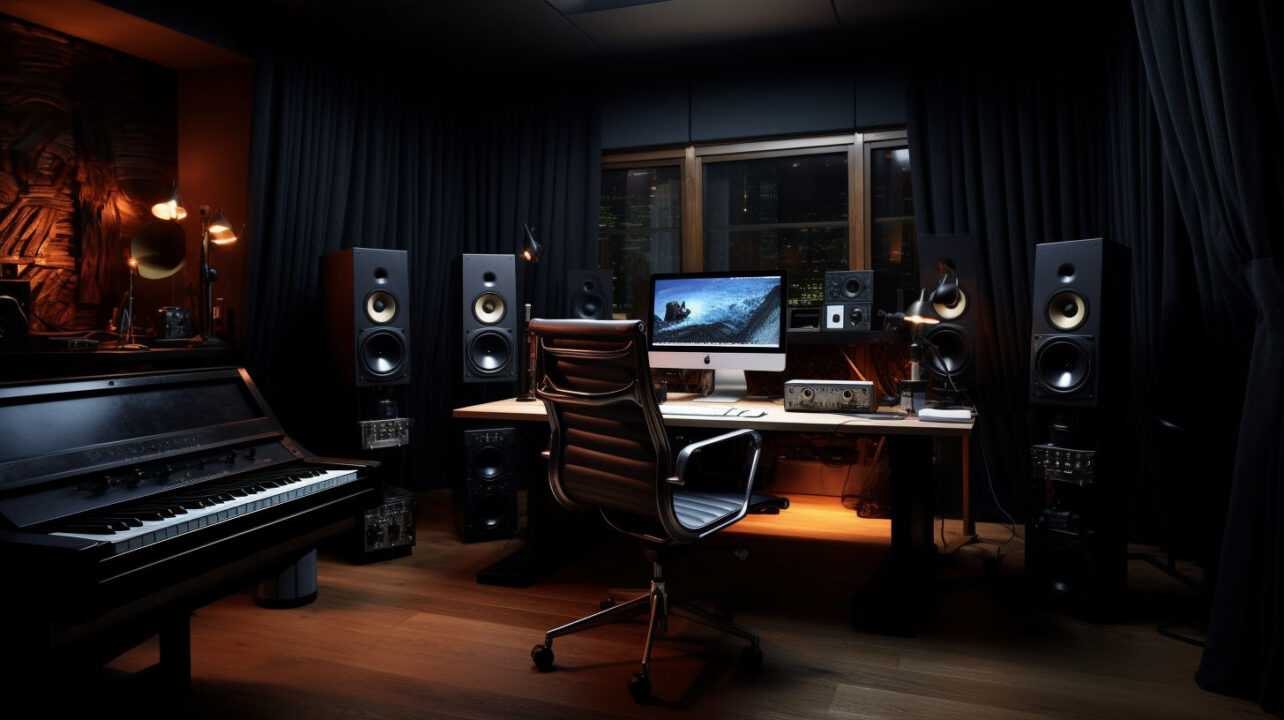The digital age has advanced where producing music, starting a podcast, or creating a film can be accomplished from home. You don’t need fancy gear to be successful.
Many creatives began in their homes. Billie Eilish’s debut album, a huge success, was produced and recorded in her family’s home! If you’re exploring a new hobby or diving into the creative world, here are some gear essentials to kickstart your journey.
Building a Studio on a Budget
Equipment can be expensive. With the vast range of equipment on offer, choosing can be overwhelming. However, numerous options provide excellent quality at a fraction of the cost of professional studio gear.
When setting up your studio, be strategic with your purchases. Establish a budget, do your research, read user reviews, and prioritize essentials. Also, avoid the Gear Acquisition Syndrome—the compulsion to buy new equipment to boost creativity. Focus on the basics.
Find a Space
For your home studio, you’ll need a dedicated space. Many, including myself, begin in their bedroom. If you have a spare room, that’s even better. After choosing your area, plan its layout.
If recording instruments, make sure there’s enough room. For mixing and mastering, allocate space for monitor speakers or acoustic treatment. While each room is unique, a typical bedroom—with its low ceilings, carpeting, and square shape—often works well. Ensure there’s space for a desk to house your setup.
Audio Interface
An audio interface, the bridge between analog and digital, is essential.
There’s a plethora of audio interfaces available. Consider the number of inputs and outputs you require to narrow your options.

For most beginners, a single output for speakers suffices. Similarly, entry-level interfaces usually allow recording of one or two sounds simultaneously. More advanced models offer additional features, like MIDI ports and direct monitoring.
Many new interfaces include bonuses like plug-ins or software such as Ableton Live (Intro version)—a great value addition for beginners.
Audio Interface Recommendations:
- Focusrite Scarlett Solo (£75)
- Focusrite Scarlett 2i2 (£125)
- Volt 2 Audio Interface (£139)
- M-Audio AIR 192×4 Audio Interface (£81)
Microphones
Your recording purpose—instruments, vocals, or other sounds—will determine your microphone choice. Since microphones vary in design and function, understanding your recording needs is crucial.
Most individuals setting up home studios begin with a dynamic microphone. These are robust, possess lower sensitivity, and are ideal for loud sound sources. However, if you’re seeking a microphone with greater sensitivity and detail capture, a condenser microphone might be more appropriate, especially for recording vocals or instruments.
A small diaphragm condenser microphone is the answer for those wanting a microphone with more directionality. They are excellent for recording instruments like strings and are also suitable for foley recording.
Some Recommendations:
- Shure SM57 Dynamic Microphone (£104)
- Audio Technica AT2020 Cardioid Condenser Microphone (£87)
- AKG P170 High-Performance Condenser Microphone (£74)

Headphones
No studio is complete without a reliable pair of studio headphones. They are vital for audio editing and monitoring tracks. Note that studio headphones differ from regular listening headphones. They have a flatter frequency response, ensuring a more accurate representation of sound.
Other factors to consider when choosing headphones are comfort and durability. Most will spend hours with them, so ensure you get a comfortable pair!
You also may want to consider whether to purchase open or closed-back headphones. If you are in a relatively quiet space, open-back headphones are fabulous for transparency, but these don’t perform well in louder environments. This is where you would get closed back for better sound isolation.
Some recommendations:
- Sony MDR-7506 (£89)
- Audio Technica MTH-M50x (£129)
- Beyerdynamic DT 990 Pro (£129)
Studio Monitors
Investing in studio monitors for those who produce music or do sound design enables you to take that one step further when building your home studio. Monitor speakers can be expensive, so if you only use headphones first, that’s okay!
Studio monitor speakers are designed to produce neutral sound so that no frequencies are artificially boosted. The sound produced will be as close to the original signal as possible, which is excellent for those who need high-fidelity sound.
Monitors vary in size, so it’s essential to consider your room’s size. Rather than considering the speakers’ dimensions, look at the driver size, which can range from 3-4 inches up to 10 inches. The bigger the drivers, the more output it can produce at lower frequencies. But keep in mind that bigger doesn’t mean better.
For smaller spaces, starting at 3-4 inches is reasonable. Going up to 5 inches is also acceptable. For larger spaces, 6.5 to 8 inches is more practical. Anything above this won’t be suitable for home studios, so keep to these guidelines.
Some recommendations:
- Presonus Eris E3.5-inch Active Monitor Speakers (£79)
- Yamaha HS5 Active Studio Monitors (£315)
- KRK Classic 5 Powered Studio Monitors (£315)
- SubZero 6″ Active Studio Monitors (£179.99)
MIDI Keyboard
This only applies to music producers, but getting a MIDI keyboard is another essential.
As DAWs will have a plethora of built-in software instruments, they will need a MIDI keyboard for them to be played. Additionally, MIDI devices will have other buttons and knobs that are used for triggering sample clips and controlling automation.
MIDI Keyboards
MIDI keyboards come in various sizes, from 25 keys to 88 keys. Your size largely depends on the type of music you plan to produce. For instance, if you’re a pianist, you’ll probably want at least 49 keys since 25 can be limiting. However, if portability and space-saving are priorities, 25 keys would be ideal.
For non-pianists, a pad controller might be more suitable. These are especially popular among those primarily working with samples, particularly in the Lo-Fi genre.
Some Recommendations:
- AKAI MPK mini (£104)
- Novation Launchkey (£85)
- M-Audio Keystation 49 keys (£75)
- AKAI Professional LPD8 MIDI Controller (£49)
Computer System
Are you a PC or Apple enthusiast? Will a desktop setup do, or is a laptop more your speed? Many beginners typically begin with a laptop, but you must consider the software you plan to run.

DAWs like Ableton Live, Logic Pro, and Adobe Audition require a reasonably robust computer. Since this device will be the home of all your creative projects, ensuring it can manage the software’s demands is crucial.
Digital Audio Workstation (DAW)
Beyond hardware, you’ll need a software hub for your digital creations. A Digital Audio Workstation (DAW) provides an interface to craft and design your tracks.
When selecting a DAW, consider both your budget and your goals.
DAW prices vary considerably, and the software’s capabilities often reflect its cost. Some DAWs limit the number of available audio tracks, editing plug-ins, and MIDI instruments. Additionally, payment structures differ—some DAWs can be purchased outright, while others operate on a subscription basis.
For home studios, here are some beginner-friendly DAW suggestions:
- Audacity: A free platform ideal for podcasts and straightforward audio editing.
- Logic Pro X: Priced at £200, exclusive to Apple. Widely preferred by music producers and film composers due to its vast stock library.
- Ableton Live 11: Available in three versions: Intro (£69), Standard (£319), and Suite (£539). It’s popular among electronic music creators and live performers. The Suite version offers the “Max for Live” feature, enabling customized device design.
- Adobe Audition: Starting at £20.99/month, it’s favored by filmmakers and content creators.
- Garageband: A free tool for Apple users, perfect for beginners.
- Reaper: At $60 for a personal license, it’s versatile and accessible for systems with limited processing power.
Other Essentials
For a comprehensive home studio, consider these additions:
- Stands and Cables: Essential for microphone setups.
- Extra Storage: Backup is crucial! SSDs or HDDs can prevent heartache caused by lost work.
- Acoustic Treatment: If you’re plagued by excessive reverb, acoustic treatments can help, though they can be an investment.
Building a home studio is a significant step into the vast creative realm. However, as this guide highlights, it’s entirely achievable with budget-friendly options available. Whether you’re starting with just a laptop, headphones, a compact MIDI keyboard, or an interface, you’re on the right trajectory.
For more on audio, check out these articles:
How to connect Hologram Electronics’s Microcosm to Ableton Live 11

